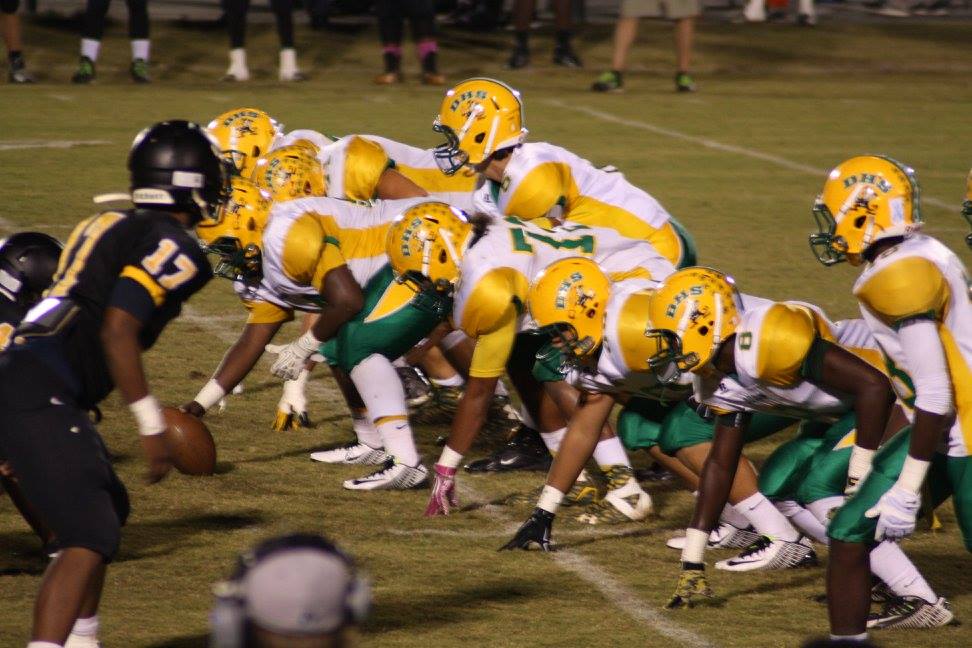ROVER POSITION IN HIGH SCHOOL FOOTBALL
Football has forever been a cat and mouse game between offenses and defenses. When a coach comes up with a creative idea or new concept, defenses are forced to also adapt and innovate. This has been most evident the past 20 years when running backs became teams leading receivers and Tight Ends morphed into slot receivers, “sniffer” and “H-Backs”.
- At the NFL level, Marcus Allen was the first back to notch 5,000 receiving yards. While Tiki Barber ran for over 10,000 yards in his career, he also caught 586 passes in his 9-year career. Ladainian Tomlinson hauled in 624 catches and Marshall Faulk snagged 767 catches for 7,000 yards.
- At the Tight End position, Rob Gronkowski, Travis Kelce, and George Kittle took the baton from Tony Gonzales to completely revolutionize the position.
Forced to catch up, defenses created the ROVER position, first made famous by Hall-of-Famer Troy Polamalu. The Rover evolved from the STRONG SAFETY position and is a defensive player who can cover receivers and tight ends, while also stopping the run. A combination of a safety and linebacker, the Rover requires both strength and speed.
Rovers are now most common in college football because NFL players tend to be very specialized. However, the Rover is ideal for high school football since almost every roster has a player who is fast enough to cover a running back, tight end, or slot receiver while also being strong enough to come up and stop the run.
Rovers are going to be “tweeners” since their size and skills place them between a defensive back and linebacker. The Rover is the stereotypical outside linebacker in the old 4-4 defenses that were prevalent when offenses used 2 backs to pound the ball on the ground. The high school Rover is 5’10” kid weighing between 170 to 200 pounds and can run a 4.9 forty is very easy to find at the high school level.
Stopping the Run
To combat today’s wide open, pass-happy offenses, most defenses are in need of 5 defensive backs. This has made the 4-2-5 and the 3-3-5 defenses very popular. But playing with five defensive backs requires the defense to take a linebacker off the field, leaving them with only two inside linebackers to defend the run. Using a ROVERinstead of a nickel corner makes the defense more solid when it comes to stopping the run.
Spying the quarterback
Another job of the rover position is to keep an eye on the quarterback. Dual-threat quarterbacks are becoming increasingly popular and defenses need a player that can keep up and tackle these play-makers at QB. A nickel corner may possess the speed to match up with running QB and receivers, but will be a little undersized when it comes to tackling them. Rovers have the necessary size to tackle stronger ball carriers.
The READ & REACT 425 Rover Hybrid
High school defenses have so much to cover and so little time to prepare. Week in and week out they face very different offenses and only have 1 hour a day to prepare. It became obvious that we needed to be more flexible to defend all these different looks. We found that we couldn’t just run Cover 3 or man-free anymore. We just didn’t have the athletes at every spot to man-up every play and we couldn’t just sit in Cover 3 all the time. We needed a 2-safety look but wanted to keep a 4-man line.
The 3-4 defense involved 2-gap D-Linemen and lots of secondary checks since one of the linebackers was blitzing every play. The 3-5-3 also had extensive blitz packages and we felt that it was weak against the run.
The 4-3 defense had the four down lineman required to stop the run and the 2-safety look. The problem was finding 3 INSIDE LINEBACKERS (with backups) instead of only two.
The READ and REACT 4-2-5 does not have 5 Defensive Backs. It has 2 Corners and 3 Safeties, but we view all 3 of our safeties as LINEBACKERS. We want them to be very aggressive versus the run. In fact we call our Free Safety a “Falcon” which is a bird of prey that hunts.
The READ and REACT 4-2-5 defense uses a bend-but-don’t-break approach that limits scoring and emphasizes stopping the run, while eliminating the big play and forcing an offense to execute long drives in order to score. The Read & React 4-2-5 is a single gap defense that requires each player to only learn four to five basic stimulus-responses.
Flop or Not Flop
The easiest way to play a 3-safety system is to have a right and left safety who remain on their side of the field. The safety on the side of most receivers rolls up as an outside linebacker, while the other 2 remain deep so you can run Cover 2 or Cover 4. Of course you can roll both of them up versus 2-backs and run a traditional 4-4 Cover 3.
Since high schools only have 1 hour a day to practice each side of the ball, flopping your safeties cuts the learning in half. It also allows you to utilize each safety’s strengths since they obviously will not be genetically identical. By FLOPPING to the multiple receiver side, our STRONG SAFETY (Spur) becomes the expert at defending trips and is never lined up at 8-10 yard safety alignment. Our WEAK SAFETY (Will) will never defend trips but becomes an expert at playing Quarters coverage.
Read & React Basic Alignment
The base alignment of the 4-2-5 is like the 4-4 defense, with the main differences being in personnel. Rather than two outside linebackers, the 4-2-5 employs two additional safeties. We call them HYBRIDS, since unlike the college teams, these two positions play a lot of outside linebacker. Essentially, it is a variation of the Nickel package.
We call our SPUR and WILL “hybrids” because they are both safeties and OLB. They are defensive backs and at most high schools, it is easier to find 5 DBs than 4 LB. On these drawings “HS” means that either the WILL or the SPUR could be in this alignment.
Depending on your base alignment and coverage, both a 1-safety-high or 2-safety-high look may be used. In a 1-high look, the free safety would play in the deep middle of the field, while the strong safety and weak safety would play like traditional OLB, lining up at 4 yards, widening out to cover slot receivers or trips formations, or lining up tighter to become edge-of-the-box defenders. Again, a fundamental difference between the READ & REACT and college, is that we want to violently re-route #2 slot receivers instead of splitting the difference, or “APEXING”.
In a 2-high look, one of the players who were playing OLB in the 1-safety-high must drop back to play safety. There are several ways to accomplish this, depending on whether you are flopping or not. Again, in the READ & REACT, we flop our safeties because we want our Strong-Safety-Hybrid (SPUR) to become an expert at defending trips without having to learn quarters-safety concepts and our Weak-Safety-Hybrid (WILL) to not have to deal with trips but get really good at being our 2nd quarters-safety cover guy.
The FALCON needs to be the second leading tackler on the team, and he has to make tackles close to the line of scrimmage. The SPUR and WILL hybrids should be in the Top 5 in tackles.
ALIGNMENTS
No WR Outside of Me
Hang Alignment.
TE + 3RB on the LOS TE + 2RB: 1×4 alignment
One WR Outside of Me
Prowl the Diagonal is our buzzword to move along the line that dissects the imaginary box. Movement depends on down-distance-tendencies….and most importantly on the genetics that the player’s momma gave him.
Two WR Outside of Me
Cover 3 & 4: Re-Route. Inside eye of #2 at 4 yards. Re-Route with eyes on #1
Cover 2 & 5: Split EMOL and #2 (APEX). Run first…no Re-Route.
Three WR Outside of Me
Alignment depends on TRIPS call. WILL Hybrid never plays OLB vs Trips
The READ & REACT 425 Defensive System contains 22-videos and a 300-page playbook. The playbook follows the videos, page-by-page, so you can take notes in the playbook while you watch Coach Stewart taking you through the drawings and gamefilm. If you purchase the entire system, you also get a 1-on-1 zoom call with Stewart, along with all the PowerPoints as editable files.





Responses